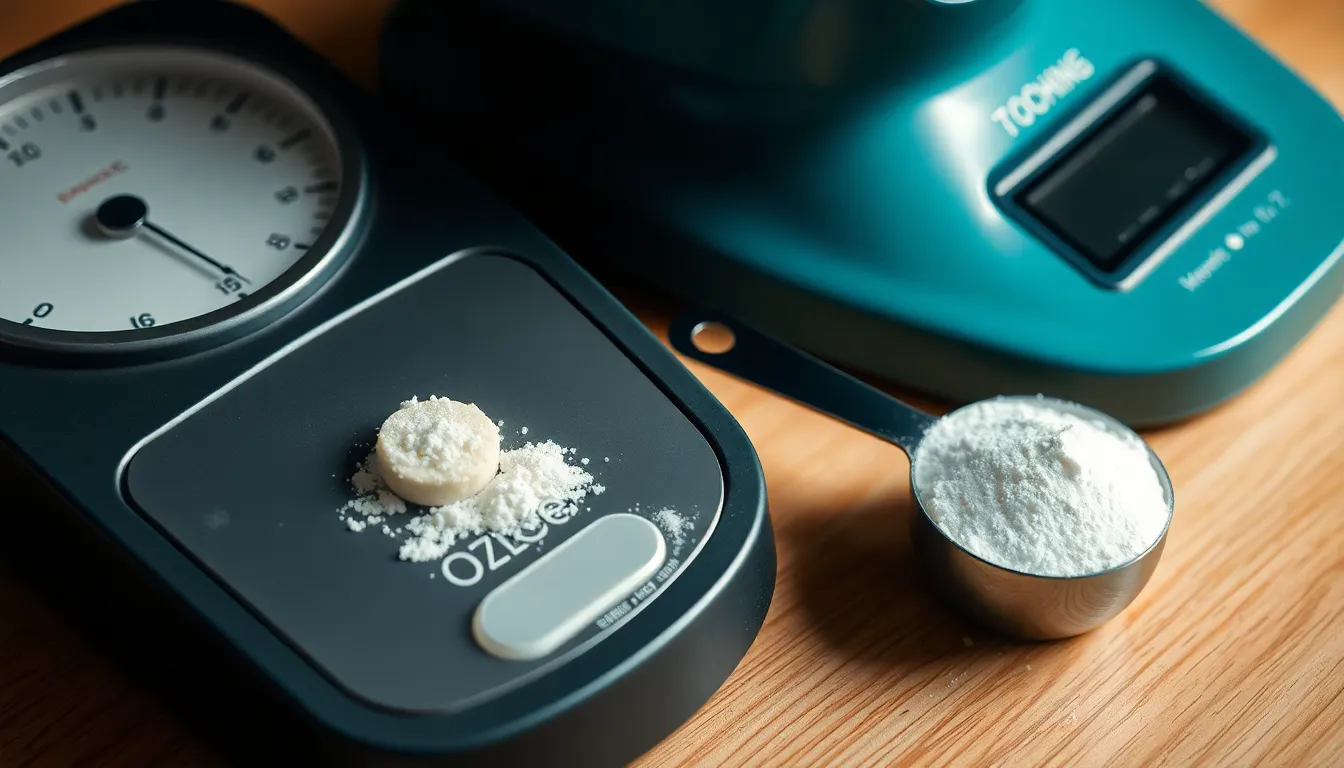When it comes to measurements, understanding conversions can save time and prevent confusion. One common question that arises is how many milligrams are in an ounce. This conversion is essential for anyone working in cooking, pharmaceuticals, or even fitness, where precise measurements matter.
An ounce is a unit of weight commonly used in the United States, while milligrams are often used in scientific contexts. Knowing the exact conversion between these two units not only simplifies recipes but also ensures accurate dosing in medications. In this article, readers will discover the straightforward answer to this question and gain insights into why this conversion is important in everyday life.
Table of Contents
ToggleUnderstanding Ounces and Milligrams
Understanding ounces and milligrams is essential for accurate measurements in various applications. This knowledge proves beneficial in cooking, pharmaceuticals, and fitness routines where precision is key.
The Basics of Measurement
Measurement defines the quantity of an object using standard units. Ounces (oz) measure weight, commonly used in food portions and other light materials. Milligrams (mg) measure very small weights, suitable for medications and supplements. One ounce equals 28,349.5 milligrams, establishing a clear relationship between these two units. Knowing this relationship empowers individuals to make precise calculations and conversions for recipes or dosages.
Conversion Factors
Using conversion factors facilitates accurate calculations between ounces and milligrams. The key factor is:
- 1 ounce = 28,349.5 milligrams
Applying this factor allows instant conversions. For example, to convert 2 ounces into milligrams, multiply 2 by 28,349.5, resulting in 56,699 mg. For smaller quantities, such as 0.5 ounces, the equivalent in milligrams equals 14,174.75 mg. Establishing these conversion factors simplifies diverse tasks involving measurement.
How Many Milligrams in an Ounce

One ounce equals 28,349.5 milligrams. Understanding this conversion is crucial for accurate measurements in cooking, pharmaceuticals, and fitness.
Standard Conversions
In standard conversions, ounces are commonly converted to milligrams using the fixed value of 28,349.5 mg per oz. For practical use, here are some standard conversions:
- 1 oz = 28,349.5 mg
- 2 oz = 56,699 mg
- 4 oz = 113,398 mg
- 8 oz = 226,796 mg
These conversions simplify recipe adjustments and dosage calculations in various applications.
Different Types of Ounces
Different types of ounces exist, primarily fluid ounces and avoirdupois ounces.
- Avoirdupois ounces measure weight, commonly used in food and goods.
- Fluid ounces measure volume, typically used in liquids.
In weight conversions, especially for solid items, the avoirdupois ounce applies. For liquid measurements, the fluid ounce is relevant. Understanding these distinctions aids in selecting the appropriate measurement for the task at hand.
Practical Applications
Accurate conversions between milligrams and ounces enhance precision in various practical fields. This section explores applications in cooking, baking, and medical dosages.
Cooking and Baking
In cooking and baking, precise measurements ensure consistency and quality. Recipes often list ingredients in ounces, while ingredients like salt or baking powder are best measured in milligrams for accuracy. For instance, a recipe requiring 4 ounces of a particular ingredient translates to 113,398 milligrams, which guarantees the right flavor and texture. Understanding these conversions maintains the integrity of dishes, especially in complex baking, where small variations can significantly impact results.
Medical Dosages
In the medical field, milligrams represent the standard unit for medication dosages, whereas ounces might be used for liquid medications. For example, a prescription might specify 0.5 ounces of a liquid medication, equivalent to 14,174.75 milligrams. Precision in these conversions ensures patients receive the correct dosage, minimizing risks of underdosing or overdosing. Health professionals often utilize these conversions to calculate dosage adjustments based on patient weight or specific treatment protocols, reinforcing the importance of these measurements in patient care.
Tools for Conversion
Using the right tools simplifies the conversion between milligrams and ounces. Various resources provide quick and accurate results, ensuring precision in measurements.
Conversion Charts
Conversion charts offer a visual reference for quickly translating ounces to milligrams and vice versa. These charts display standard values, such as:
| Ounces (oz) | Milligrams (mg) |
|---|---|
| 1 oz | 28,349.5 mg |
| 2 oz | 56,699 mg |
| 4 oz | 113,398 mg |
| 8 oz | 226,796 mg |
| 16 oz | 453,592 mg |
These charts allow users to convert measurements at a glance, making them useful for cooking, pharmaceuticals, and daily tasks requiring precise quantities.
Online Calculators
Online calculators provide an efficient way to convert ounces to milligrams. Many websites and applications include tools where users input the desired ounces, instantly receiving the equivalent milligrams. This technology often includes features such as:
- Customizability for different unit conversions.
- Instant results for immediate application.
- Historical data for frequent conversions.
These calculators simplify the conversion process, enhancing accuracy in various fields and everyday measurements.
Understanding the conversion between milligrams and ounces is vital for precision in various fields. Whether in cooking or pharmaceuticals accurate measurements can make a significant difference. Knowing that one ounce equals 28,349.5 milligrams empowers individuals to make informed decisions in their daily tasks.
Utilizing conversion charts and online calculators enhances this process by providing quick and reliable results. This knowledge not only aids in achieving consistency in recipes but also ensures safety in medication dosages. By mastering these conversions anyone can navigate the complexities of measurements with confidence.




